IT Law (Books and Journals)
14643 results for IT Law (Books and Journals)
-
Aslib Journal of Information Management From No. 66-1, January 2014 to No. 75-2, September 2022 Emerald Group Publishing Limited, 2021
-
 Collection and Curation
From No. 37-1, January 2018
to No. 42-3, March 2023
Emerald Group Publishing Limited, 2021
Collection and Curation
From No. 37-1, January 2018
to No. 42-3, March 2023
Emerald Group Publishing Limited, 2021
-
Data Technologies and Applications From No. 52-1, February 2018 to No. 57-2, April 2023 Emerald Group Publishing Limited, 2021
-
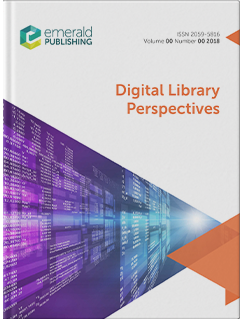 Digital Library Perspectives
From No. 32-1, February 2016
to No. 39-2, April 2023
Emerald Group Publishing Limited, 2021
Digital Library Perspectives
From No. 32-1, February 2016
to No. 39-2, April 2023
Emerald Group Publishing Limited, 2021
-
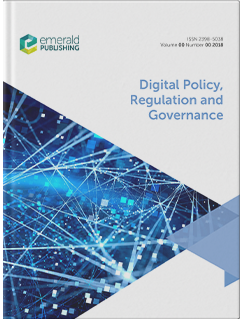 Digital Policy, Regulation and Governance
From No. 19-1, January 2017
to No. 25-3, April 2023
Emerald Group Publishing Limited, 2021
Digital Policy, Regulation and Governance
From No. 19-1, January 2017
to No. 25-3, April 2023
Emerald Group Publishing Limited, 2021
-
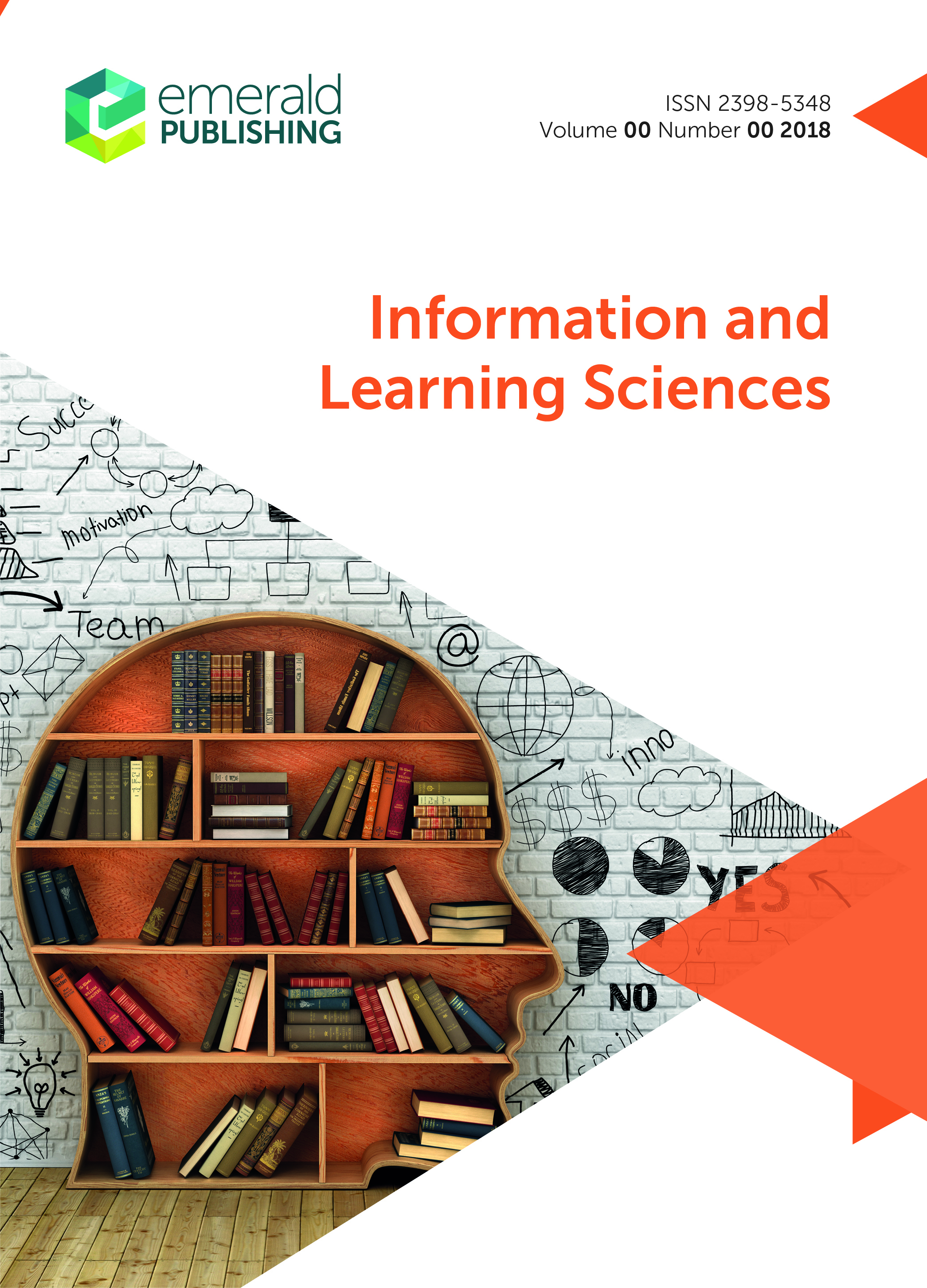 Information and Learning Science
From No. 118-1/2, January 2017
to No. 124-3/4, April 2023
Emerald Group Publishing Limited, 2021
Information and Learning Science
From No. 118-1/2, January 2017
to No. 124-3/4, April 2023
Emerald Group Publishing Limited, 2021
-
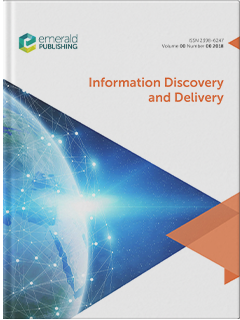 Information Discovery and Delivery
From No. 45-1, February 2017
to No. 51-2, November 2022
Emerald Group Publishing Limited, 2021
Information Discovery and Delivery
From No. 45-1, February 2017
to No. 51-2, November 2022
Emerald Group Publishing Limited, 2021
-
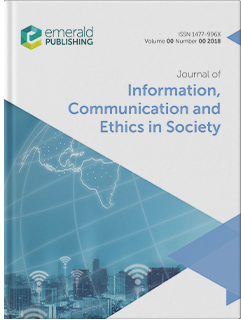 Journal of Information, Communication and Ethics in Society
From No. 1-1, February 2003
to No. 18-2, May 2020
Emerald Group Publishing Limited, 2021
Journal of Information, Communication and Ethics in Society
From No. 1-1, February 2003
to No. 18-2, May 2020
Emerald Group Publishing Limited, 2021
-
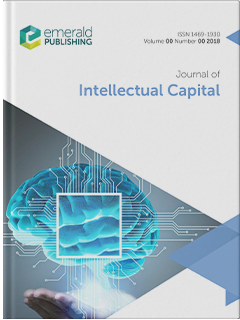 Journal of Intellectual Capital
From No. 1-1, March 2000
to No. 23-7, June 2022
Emerald Group Publishing Limited, 2021
Journal of Intellectual Capital
From No. 1-1, March 2000
to No. 23-7, June 2022
Emerald Group Publishing Limited, 2021
-
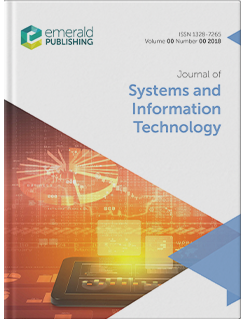 Journal of Systems and Information Technology
From No. 1-1, March 1997
to No. 22-4, April 2020
Emerald Group Publishing Limited, 2021
Journal of Systems and Information Technology
From No. 1-1, March 1997
to No. 22-4, April 2020
Emerald Group Publishing Limited, 2021
-
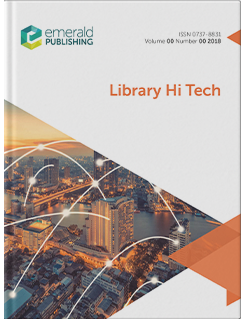 Library Hi Tech
From No. 1-1, January 1983
to No. 38-1, March 2020
Emerald Group Publishing Limited, 2021
Library Hi Tech
From No. 1-1, January 1983
to No. 38-1, March 2020
Emerald Group Publishing Limited, 2021
-
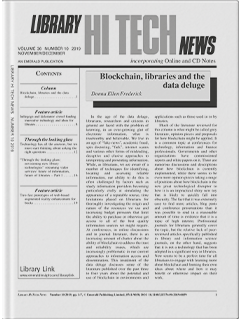 Library Hi Tech News
From No. 21-1, January 2004
to No. 37-4, March 2020
Emerald Group Publishing Limited, 2021
Library Hi Tech News
From No. 21-1, January 2004
to No. 37-4, March 2020
Emerald Group Publishing Limited, 2021
-
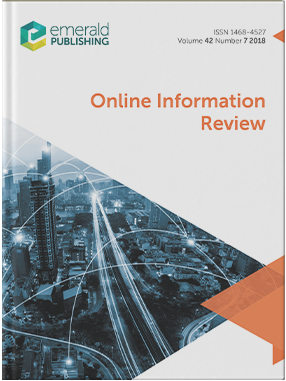 Online Information Review
From No. 24-1, February 2000
to No. 44-1, January 2020
Emerald Group Publishing Limited, 2021
Online Information Review
From No. 24-1, February 2000
to No. 44-1, January 2020
Emerald Group Publishing Limited, 2021
-
 Records Management Journal
From No. 1-1, January 1989
to No. 30-1, March 2020
Emerald Group Publishing Limited, 2021
Records Management Journal
From No. 1-1, January 1989
to No. 30-1, March 2020
Emerald Group Publishing Limited, 2021
-
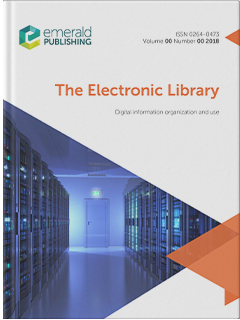 The Electronic Library
From No. 1-1, January 1983
to No. 38-2, April 2020
Emerald Group Publishing Limited, 2021
The Electronic Library
From No. 1-1, January 1983
to No. 38-2, April 2020
Emerald Group Publishing Limited, 2021
- VINE From No. 15-1, January 1985 to No. 50-2, November 2019 Emerald Group Publishing Limited, 2021
-
 World Journal of Science, Technology and Sustainable Development
From No. 7-1, February 2010
to No. 17-2, April 2020
Emerald Group Publishing Limited, 2021
World Journal of Science, Technology and Sustainable Development
From No. 7-1, February 2010
to No. 17-2, April 2020
Emerald Group Publishing Limited, 2021
- The Cologne Public Library as accelerator of digitisation
- Editorial
-
Impact on recommendation performance of online review helpfulness and consistency
Purpose: The existing collaborative filtering algorithm may select an insufficiently representative customer as the neighbor of a target customer, which means that the performance in providing recommendations is not sufficiently accurate. This study aims to investigate the impact on recommendation performance of selecting influential and representative customers. Design/methodology/approach:...
-
ABEE: automated bio entity extraction from biomedical text documents
Purpose: The purpose of this study was to design a multitask learning model so that biomedical entities can be extracted without having any ambiguity from biomedical texts. Design/methodology/approach: In the proposed automated bio entity extraction (ABEE) model, a multitask learning model has been introduced with the combination of single-task learning models. Our model used Bidirectional...
-
Research on the generalization of social bot detection from two dimensions: feature extraction and detection approaches
Purpose: The proliferation of bots in social networks has profoundly affected the interactions of legitimate users. Detecting and rejecting these unwelcome bots has become part of the collective Internet agenda. Unfortunately, as bot creators use more sophisticated approaches to avoid being discovered, it has become increasingly difficult to distinguish social bots from legitimate users....
-
Social support on Reddit for antiretroviral therapy
Purpose: Social media platforms such as Reddit can be used as a place for people with shared health problems to share knowledge and support. Previous studies have focused on the overall picture of how much social support people who live with HIV/AIDS (PLWHA) receive from online interactions. Yet, only few studies have examined the impact of social support from social media platforms on...
-
Do SEC filings indicate any trends? Evidence from the sentiment distribution of forms 10-K and 10-Q with FinBERT
Purpose: This study quantified companies' views on the COVID-19 pandemic with sentiment analysis of US public companies' disclosures. The study aims to provide timely insights to shareholders, investors and consumers by exploring sentiment trends and changes in the industry and the relationship with stock price indices. Design/methodology/approach: From more than 50,000 Form 10-K and Form 10-Q...
-
A new approach for histological classification of breast cancer using deep hybrid heterogenous ensemble
Purpose: Hundreds of thousands of deaths each year in the world are caused by breast cancer (BC). An early-stage diagnosis of this disease can positively reduce the morbidity and mortality rate by helping to select the most appropriate treatment options, especially by using histological BC images for the diagnosis. Design/methodology/approach: The present study proposes and evaluates a novel...
-
Property Assertion Constraints for ontologies and knowledge graphs
Purpose: The curation of ontologies and knowledge graphs (KGs) is an essential task for industrial knowledge-based applications, as they rely on the contained knowledge to be correct and error-free. Often, a significant amount of a KG is curated by humans. Established validation methods, such as Shapes Constraint Language, Shape Expressions or Web Ontology Language, can detect wrong statements...
-
Personal data and personalisation in media: experts’ perceptions of value, benefits, and risks
Purpose: Media users daily exchange personal data for “free” personalised media. Is this a fair trade, or user “exploitation”? Do personalisation benefits outweigh privacy risks? Design/methodology/approach: This study surveyed experts in three consecutive online rounds (e-Delphi). The authors explored personal data processing value for media, personalisation relevance, benefits and risks for...
- Guest editorial: The role of Industry 4.0 in enabling circular economy
-
Reminders, reflections, and relationships: insights from the design of a chatbot for college advising
Purpose: In the USA, 22–40% of youth who have been accepted to college do not enroll. Researchers call this phenomenon summer melt, which disproportionately affects students from disadvantaged backgrounds. A major challenge is providing enough mentorship with the limited number of available college counselors. The purpose of this study is to present a case study of a design and user study of a...
-
Smart home devices and B2C e-commerce: a way to reduce failed deliveries
Purpose: Failed deliveries (i.e. deliveries not accomplished due to the absence of customers) represent a critical issue in B2C (Business-to-consumer) e-commerce last-mile deliveries, implying high costs for e-commerce players and negatively affecting customer satisfaction. A promising option to reduce them would be scheduling deliveries based on the probability to find customers at home. This...
-
Defining perplexity and reflective thinking in a game-based learning environment
Purpose: The purpose of this paper is to understand the role of perplexity in young players’ experiences within an educational videogame and how reflective thinking can help them to get out of perplexing scenarios. Design/methodology/approach: We used a constructivist grounded theory approach and the lenses of Dewey’s conceptualization of perplexity and reflective thinking to examine young...
-
Is dc:subject enough? A landscape on iconography and iconology statements of knowledge graphs in the semantic web
Purpose: In the last few years, the size of Linked Open Data (LOD) describing artworks, in general or domain-specific Knowledge Graphs (KGs), is gradually increasing. This provides (art-)historians and Cultural Heritage professionals with a wealth of information to explore. Specifically, structured data about iconographical and iconological (icon) aspects, i.e. information about the subjects,...
-
Innovating in data-driven production environments: simulation analysis of Net-CONWIP priority rule
Purpose: Motivated by recent research indicating that the operational performance of an enterprise can be enhanced by building a supporting data-driven environment in which to operate, this paper presents a simulation framework that enables an examination of the effects of applying smart manufacturing principles to conventional production systems, intending to transition to digital platforms. ...
-
Modeling customer satisfaction and revisit intention from online restaurant reviews: an attribute-level analysis
Purpose: The purpose of this paper is to detect predefined service attributes and their sentiments from online restaurant reviews, and then to measure the effects of customer sentiments toward service attributes on customer satisfaction (CS) and revisit intention (RVI) simultaneously. Design/methodology/approach: This study proposed a supervised framework to model CS and RVI simultaneously from...
-
Understanding investor co-investment in a syndicate on equity crowdfunding platforms
Purpose: Considering the unique characteristics of equity crowdfunding platforms including the removal of stringent structural barriers (e.g. lack of co-location), high visibility and traceability of investor characteristics, large pool of available investors and simplified transaction process, the authors aim to examine how the two most prevalent mechanisms (i.e. homophily and repeated ties)...
-
The viewer value co-creation process on sports live streaming platforms
Purpose: The Sports Live Streaming Platforms (SLSPs) have taken centre stage in broadcasting sporting events. This study adopts the value creation sphere (VCS) model and the service dominant logic (SDL) to unpack the value co-creation process on SLSPs. Design/methodology/approach: A case study with one of the most representative SLSPs in China, involving the netnographic approach and in-depth...
-
Is COCOMO and Putnam relevant to e-Government? Software development efforts estimation in e-Government in the Indian state of Andhra Pradesh
Purpose: This paper aims to examine the process for estimation of efforts for software development and suggests a framework for estimating software development costs and ensuring quality of code in e-Government projects from the Indian state of Andhra Pradesh. With no established processes for estimation of efforts, the Government relied on open bids from the market to develop these e-Government...
-
Does online–offline channel integration matter for supply chain resilience? The moderating role of environmental uncertainty
Purpose: Drawing on dynamic capability theory, this study investigates how online–offline channel integration (OOCI) affects a firm's supply chain resilience and how such an effect is moderated by market turbulence and regulatory uncertainty. Design/methodology/approach: A sample of 273 Chinese firms that conduct online and offline business and hierarchical regression analysis were used to...
-
Online presence of public archival institutions of South Africa
Purpose: In the wake of the fourth industrial revolution, where most information is accessible online, archives should be visible online for them to fulfil their legislated mandate and facilitate access to information resources. The Covid-19 pandemic has further underscored the importance of online platforms in making archives accessible without the public having to visit archival institutions...
-
Dynamic perceived quality analysis using social media data at macro- and micro-levels
Purpose: This paper aims to propose a method for dynamic product perceived quality analysis using social media data and to achieve a macro–micro combination analysis. The method enables the prioritization of perceived quality attributes and provides perception causes. Design/methodology/approach: To rationalize the macro–micro combination, ANOVA and multiple linear regression were used to...
-
Developing a collection around transgender life-writing at Senate House Library, University of London
Purpose: The purpose of this case study is to document the process of building a collection of works around transgender life-writing, following the identification of a significant gap in the existing collections. Design/methodology/approach: This case study describes and evaluates a collection development project undertaken at Senate House Library, University of London. After evaluating four...
-
Mining the determinants of review helpfulness: a novel approach using intelligent feature engineering and explainable AI
Purpose: This paper aims to find determinants that can predict the helpfulness of online customer reviews (OCRs) with a novel approach. Design/methodology/approach: The approach consists of feature engineering using various text mining techniques including BERT and machine learning models that can classify OCRs according to their potential helpfulness. Moreover, explainable artificial...
-
Cryptocurrency adoption and continuance intention among Indians: moderating role of perceived government control
Purpose: This study aims to investigate the influence of perceived government control (PGC) on cryptocurrency adoption and continuance intention among Indians through an integrated model of the extended Unified Theory of Acceptance and Use of Technology (UTAUT) with the Information System Success Model (ISSM). Design/methodology/approach: This study examined the items of cryptocurrency adoption,
-
Arab authorities use digital surveillance to control press freedom: journalists’ perceptions
Purpose: The purpose of this study is to investigate the extent of digital surveillance by Arab authorities, which face risks and threats of surveillance, and how journalists seek to press freedom by using tools and techniques to communicate securely. Design/methodology/approach: The study used focus group discussions with 14 journalists from Syria, Saudi Arabia, Libya, Yemen, Oman, Jordan and...
-
Bio-networking among librarians, parents, and children in a modern children’s library: a phenomenological study
Purpose: This study aimed to understand how parents and librarians describe their lived experiences in a modern children’s library that aims to create a triad bond through the organization of multiliteracy events and activities. Design/methodology/approach: The study used a phenomenological case study approach using two semistructured interviews, the first with parents (n = 5) and the second...
-
Metaverse academic library: would it be patronized?
Purpose: This study aims to examine if students would patronize metaverse academic library (MAL) if it becomes available in Nigeria. Design/methodology/approach: This study used a descriptive survey research design. The population was made up of 1,037 undergraduate in Adeleke University. Descriptive statistic was used to analyse data. Findings: Findings indicated most students have never used...
-
An exploratory study of organisational and industry drivers for the implementation of emerging technologies in logistics
Purpose: Emerging technologies have the capacity to transform industries offering substantial benefits to users. Given the increasing demand for advanced logistics services, third-party logistic service providers (LSPs) face greater pressure to deploy and realise these technologies, especially given the demands and operational challenges created during the COVID-19 crisis. Drawing upon the...
